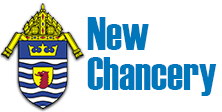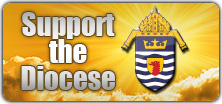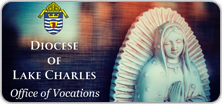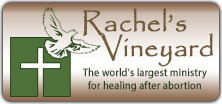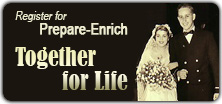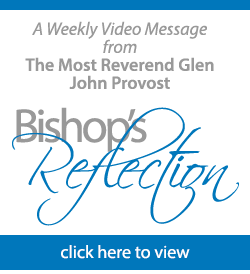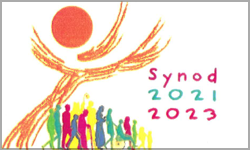In commemorating the 100th Anniversary of the founding of Sacred Heart of Jesus Church, the official year of 1919 was chosen because in that year the Holy Ghost Fathers took on the task of establishing Sacred Heart Church as a parish. In actual fact, however, the history of Sacred Heart Church as a parish goes back to the “lady with a dream” – Miss Eleanor Figaro, who preceded the first pastor, Father Anthony Hackett, by ten years. During the period between 1908 and 1919, the history of the church and that of Sacred Heart School were so interwoven that the development of one cannot be told without telling the other.
In 1908, a group of Catholic Negro men of Lake Charles, seeking a means for education of their children, turned to Father Cramers, pastor of Immaculate Conception Church, with a petition for assistance. Leader of the group was Louis Adams, proprietor of a small drug store and an active layman. Others in this group included Gilbert Rochon, Paul Lewis, Onezein Geyen, John Moore, James Olivier, Felix Henry, Jack Martin, J.A. Porche, Frank Perry and William Green.
Father Cramers journeyed to Lafayette, Louisiana to confer with Rev. W.T. Teurlings, pastor of St. John’s Cathedral, who in turn consulted with the Sisters of the Holy Family. The Sisters highly recommended Miss Eleanor Figaro for a teaching position. Miss Figaro was a recent graduate of St. Paul High School in Lafayette.
The young teacher, Miss Eleanor Figaro arrived in Lake Charles to take up her destiny. With her first eighteen students, Miss Figaro began her work as a teacher in a building on Enterprise Boulevard and Mill Street known as Green’s Hall. Along with her academic programs spanning grades one through six, she incorporated religious instruction in the Catholic faith. Six first communicants were prepared in the first year.
Miss Figaro’s reputation as a great teacher spread. The men who had hired Miss Figaro appealed to Mother Katherine Drexel for funds to purchase land and build a school.
A tract of land on Louisiana Avenue and Pine Street was purchased in 1910 by Mother Katharine Drexel. The men banded together and formed a volunteer group to build a school. Thus, the “little red schoolhouse” was built. Miss Mary Ryan was hired to assist Miss Figaro with the increased enrollment that came about. The classes moved to the “little red school house”. Their joy was short lived as the school was demolished by the storm of 1918 and they had to return to Green’s Hall. Again, with volunteer help, the school was rebuilt.
During this time, Catholic people had to attend Mass in downtown Lake Charles at Immaculate Conception Church. People would meet at the little red schoolhouse each Sunday and walk down Mill Street to Kirby Street to attend Mass.
In the summer of 1919, Bishop Jean Jeanmard of the newly created Lafayette Diocese requested the Holy Ghost Fathers to serve the growing Catholic population of Negro Catholics in Lake Charles. The first pastor, Father Anthony J. Hackett, an Irish priest took on the daunting challenge of pastoring a flock that had no church, no rectory, no means of transportation, just a “chalice and a prayer”. He was sustained by his strong faith and the faith and determination of his new spiritual community. On October 5, 1919, the parish was formally established by Bishop Jeanmard.
Father Hackett lived at Immaculate Conception Church Rectory and celebrated Mass for his new congregation at the little red schoolhouse. With help from Mother Katharine Drexel and the Holy Ghost Fathers, land was purchased on Mill St and Louisiana Avenue for a church. The people of the new parish raised funds for materials and the men of the parish built a parish church. This was to become the foundation for a thriving, faith filled Catholic community. The church and the school became the living, breathing manifestation of the hope, love and commitment of parishioners to their worship and service to God, their service to community and dedication to the education of their families.
Once Father Hackett was able to purchase an automobile in 1924, he then reached out to Creole and African American communities in various parts of the town and parish. He traveled and said Mass periodically in areas such as Holmwood, Chloe, Iowa, Prien Lake and Higgins. When Father Hackett left for his next assignment, he left behind a strong and growing faith filled community.
In the early thirties, Calcasieu Parish and the Lake Charles area saw tremendous growth in population due to the establishment of oil and gas production facilities, lumber and sulphur plants and the opening of shipping facilities. Many Creole families came from “down East” to Lake Charles looking for employment so as to better their families. Many were craftsmen who fit right into this job expansion market. They located Sacred Heart and joined this growing church family. The school was now staffed by Sisters of the Blessed Sacrament and lay teachers and offered classes for students from first through twelfth grades. The priests who staffed the church and taught in the high school and along with the nuns stressed education as a means to a better life. They sought scholarships and financial assistance for graduates and many young men and women left Lake Charles in pursuit of a higher education. Some went on and became priests and nuns and others went to colleges and some even went to medical schools and became physicians.
The need for a larger church became apparent and the parishioners began a campaign to raise funds for this project. They started activities such as bazaars, Mardi Gras balls, chicken gumbo and bar-b-que sales. Enough money was raised for the new church and the men of the parish used their skills and trades to build it. It was completed in 1941. Also, a second story was added to the original church for much needed high school classes and lab facilities. As the church grew, so also the school grew. Parishioners began a campaign to raise funds for a new high school and gymnasium.
The bigger and new church could not accommodate the number of new parishioners. Masses were held hourly on Sundays to accommodate the great numbers who attended. Even though Sacred Heart was itself a young parish, it became incumbent on the then pastor to expand facilities in other parts of the growing city. A Mission was created and property was purchased on Opelousas Street. Soon it became a young parish of the Immaculate Heart of Mary and was staffed by Holy Ghost Fathers. Also, when the new high school building was completed, the vocational and science building was dismantled and brought to Prien Lake where it soon became the St. Martin dePorres Church parish.
The people of Sacred Heart also realized the need for a cemetery to serve the faithful departed. It purchased land in the northern part of the city for a cemetery. As the cemetery grew, the need for mausoleums became apparent and now there are several mausoleums.
The outreach programs of Sacred Heart Church are many. They include the Knights and Ladies of St. Peter Claver, League of the Sacred Heart, Junior Daughters and Junior Knights of St. Peter Claver, Bible Study Prayer Group, Altar and Rosary Society, Hospitality Committee, Social Justice, RCIA and Community Service Committee, Senior Citizens, St. Joseph Society, St. Vincent DePaul Society, Senior, Youth, and Gospel Choirs, Evangelization Commission, Worship and Spiritual Life Committee, Ushers, Greeters, Readers, Finance and Parish Councils, and Ushers and Greeters.
Sacred Heart Church Parish is different from other parishes in that it evolved from a school. Most parishes open schools after establishment as a parish but Sacred Heart School preceded the church parish by some ten years. Sacred Heart Elementary and High School grew through the years with students and reputation. The school became fully accredited by the Southern Association of Schools and Colleges in the 1930’s and its graduates went on to four- year colleges throughout the nation.
Sacred Heart Church is one of very few parishes across this nation that can claim from it came two bishops who served the Church in Louisiana and in Washington, D.C. They were Bishop Harold Perry, Auxiliary Bishop of New Orleans and Bishop Leonard Olivier, Auxiliary Bishop of Washington, D.C. Bishop Perry was the first African American bishop appointed in the United State in the 20th century. His appointment caused protests from many groups in New Orleans and throughout the nation. These groups opposed any type of desegregation within the church. However, Bishop Perry eventually won over those who were opposed to him by his deep humility and strong faith. Bishop Olivier served the Archdiocese of Washington, D.C. admirably. Other priests that came from Sacred Heart Catholic Church are Rev. Jerome LeDoux and his brother, Rev. Verlin Ledoux and Rev. Robert Boxie, III. The Church claims some seven Sisters of the Holy Family and one Sister of the Blessed Sacrament. Three deacons have been ordained to serve the Church. They are Deacons Edward Lavine, Erroll Deville and Harold Nixon.
Many notable citizens of Sacred Heart Church continue to serve the nation, state, and city. They represent all facets of service including, education, medicine, law, business, civil and government service. In the new Century of Service, hopefully all parishioners will continue to stand on the shoulders of the many who have gone before us as we do God’s will in everything.

